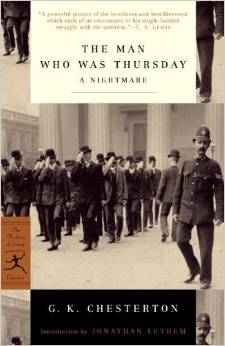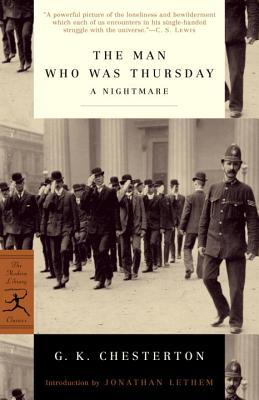
That is not a cloud, but the back of a cloud. That is not a tree, but the back of a tree. We see everything from behind, and it looks brutal. “Shall I tell you the secret of the whole world? It is that we have only known the back of the world. This story is very different from those, and, as I mentioned, the subtitle-which is left out on many editions-should suggest as much.Īlthough on the whole the book is full of suspense, parts of the plot do seem predictable, but the narrative is told in such a clever way that it did not bother me in the least, or detract from the constant wonder of reading the novel. My biggest bone with this book is the presentation-as usually printed, it looks like a piece of crime fiction, and it could easily be confused as one of the “Father Brown” stories.

Nothing is lost in reading his non-fiction, poetry, or novels. The story couldn’t be real just as he describes the story it is real all around us and is renewed every day.Ĭhesterton proves to cross genres just as adeptly as Lewis or MacDonald. My favorite part was the irony that grows larger and larger throughout the book, until it becomes so ludicrous that you see why the book’s subtitle is A Nightmare. My favorite part of this book was not any of the aphorisms peppered throughout-which are inevitable in any Chesterton book. Chesterton despises tidily framed opinions and political correctness, and this book makes some brow-furrowing philosophical statements both through the characters’ voices and through the paradoxes engendered throughout the plot. Night Shyamalan film, as readers are trying to figure out what is real and what is fantasy. Syme believes that Gregory may be involved in some deeper plot with an underground anarchist organization Syme has no idea, though, how deep the rabbit hole will go.Īs the plot thickens, it carries with it all the intrigue of The Matrix or an M. Syme, along with others, has been given the assignment of rooting out anarchism in England, and he begins by getting acquainted with Gregory, a friend of a friend, who appears to dabble in anti-establishment talk around parlors and dinner tables. The story centers around the work of the “philosophical police,” especially one man named Syme.

It reads exactly like a modern action movie, skipping from place to place, and you are not quite sure, until the end, who is on which side of the conflict.

The Man Who Was Thursday is probably Chesterton’s most intriguing work of fiction. His most apt nickname is “The Prince of Paradox.” Chesterton was a devoutly Catholic journalist, poet and novelist of the early 20th century.


 0 kommentar(er)
0 kommentar(er)
